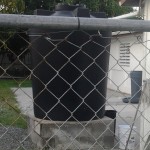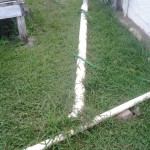 Aspiring water conservationist may want to take a page from the water capture system used in St. Croix, U.S. Virgin Islands. St. Croix became a U.S. possession in the Treaty of the Danish West Indies of 1916.
Aspiring water conservationist may want to take a page from the water capture system used in St. Croix, U.S. Virgin Islands. St. Croix became a U.S. possession in the Treaty of the Danish West Indies of 1916.
Throughout the territory can be seen the vestiges of Colonial life. Remnants of Sugar Mill towers are scattered among foliage. And old water tanks constructed of steel may still be found on properties once used as plantations.
Residents of St. Croix may buy municipal water but many still use the method used for hundreds of years, rain capture. Outside of the tourist spots locals capture rain in cisterns which is piped into homes. Because the water is stored in underground tanks it is necessary to use an electric pump to create water pressure to pull water from the reservoir to flush the toilet. Used as potable water it runs from the faucets in the kitchen and bathroom. In some cases only one sink faucet works. Heated water is however used in the shower and bath. Flow is low but effective. Wealthier Cruzan’s homes and tourist accommodations have modernized facilities that use both municipal and captured water.
Water capture is big business. Water barrels, camels, and tanks can be seen throughout the island. A host of other businesses support this industry. The outdoor tanks sit on cement pedestals. Excavation is needed for underground tanks. Not to mention administration, inspection and regulation as municipal cost centers.
Unlike Utah where water capture it is illegal, without a Water Right, water capture in St. Croix creates jobs. Senate Bill S510 would make water capture illegal in the U.S. Although the island has considerably more rain fall the concept works because everyone uses it. Monetizing natural resources seems to be the way of the future, ask the guy who bought the moon… for nothing.
 Author: Tina Riley-Humphrey, representing GreeningDetroit.com
Author: Tina Riley-Humphrey, representing GreeningDetroit.com







